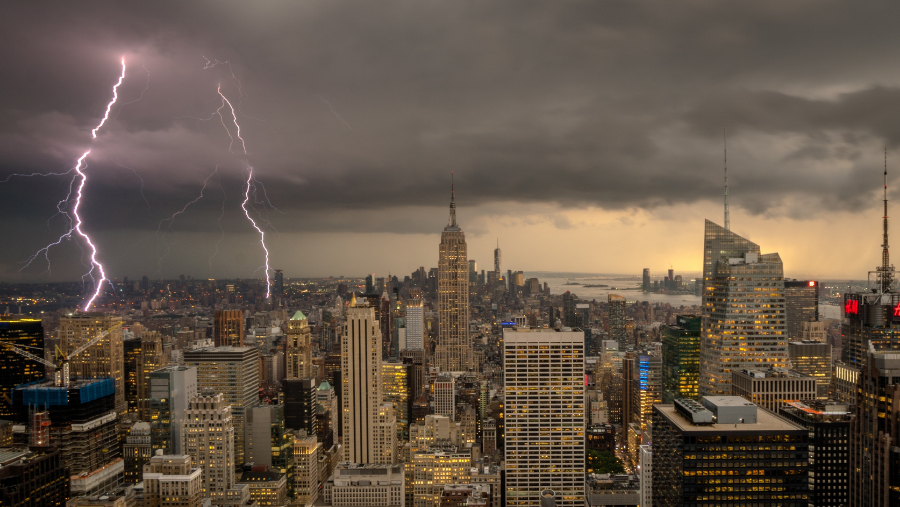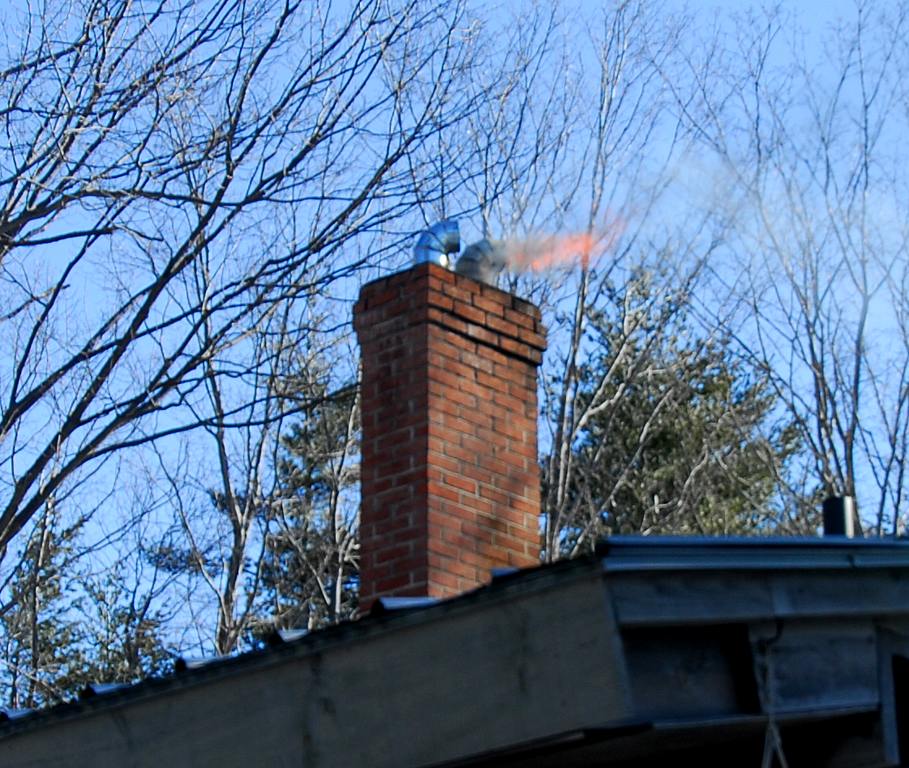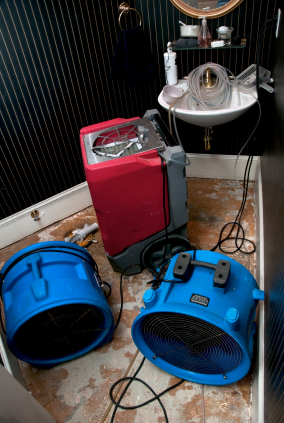Do Thunderstorms Knock Out Power?
Thunderstorms have the ability to temporarily cut power by downing power lines, floodingFlooding is the overflow or accumulation of water in areas t... More power-related equipment, or blowing objects into overhead lines. Severe weather events, such as lightning, powerful winds, and heavy rain, are examples of natural forces that can cause power outages.
Power outages seem like a thing of the past, but thunderstorms are still able to wreak havoc on electricity lines. In fact, as recently as 45 years ago, the power was lost in New York City for approximately 25 hours, leading to widespread looting and fires.

How do power line systems work?
Electricity reaches homes through the power lines dotting the landscape. But first, the power is produced in generation stations, which use wind, coal, natural gasNatural gas is a flammable fossil fuel composed mainly of me... More, and water to create electricity. A transformer pushes this electrical current while increasing its voltage.
An increase in voltage is necessary so that the electricity has the ability to travel long distances through the transmission lines around the country. The voltage lowers once it reaches a substation, which occurs after the electricity’s long journey across the country.
At this point, the power is distributed among local power lines, such as those visible in residential areas. The electricity’s voltage further drops as the power moves from the distribution lines into transformers. Now, the power is at a low voltage and is safe to enter a residential home.
Prior to entering the residence, the electric current is transported into the home’s service panel. The electricity then is distributed to the wall sockets and wires. Individuals charging their technology have access to electricity by plugging the devices into an electrical socket.
This scenario is an example of an aboveground power line system. Electrical currents move hundreds or thousands of miles in order to power homes. Despite the magnitude of the power line systems, fierce thunderstorms can cause issues with the delivery of power.
How do thunderstorms knock out power?
Power lines can be downed in severe weather, like thunderstorms. High winds, such as those that frequently accompany major storms, can cause tree limbs to sway and eventually snap. A tree branch that comes into contact with a power line can interrupt the flow of electricity.
For example, when the tree branch comes into contact with the power line, the power is briefly cut; power is automatically restored once the contact between the tree branch and the power line ends. The process ensures electric current is not discharged and energy is not wasted.
However, if the tree branch breaks and falls onto the power line, the entire line can be pulled down along with the falling tree. Municipal crews spend significant time cutting back tree branches near power lines. But even high winds during a thunderstorm can bring down a power line.
Blown fuses and power losses are also possible when continuous and vast amounts of precipitation fall and damage the insulationInsulation is a material used in buildings to reduce the tra... More elements in power lines. Furthermore, electric cables can wear down over time, allowing the rainfall to seep inside and cause major damage.
Lightning strikes are a power line’s worst enemy, especially since these forces of nature are attracted to high-reaching, metallic objects. When a power line is struck by lightning, it creates a surge of power that overloads local transformers and results in significant power issues.
Other Common Causes of Power Outages During Thunderstorms
Other than the factors mentioned in the section above, here are some additional reasons why a thunderstorm can cause a power outage.
Heavy Rain and Flooding
Severe thunderstorms often bring heavy rainfall that can leadLead is a heavy metal that can be toxic to humans, especiall... More to localized floodingFlooding is the overflow or accumulation of water in areas t... More. Floodwaters can erode the ground around power poles, undermining their stability. Furthermore, water can cause short circuits in electrical equipment, leading to failures that can disrupt power distribution.
Thunderstorms may also produce hail and debris that can damage power infrastructure. Hailstones can physically break or damage power lines, while debris from storms can block access for repairRepair is the act of fixing or restoring damaged property, m... More crews, prolonging outages.
Overloaded Systems
Major power transmission systems and generators are designed to withstand typical weather events, but widespread damage to substations and distribution systems during a thunderstorm can trigger overload protections. When these systems detect faults, they may shut down to prevent further damage, causing cascading failures across the grid.
Delayed Restoration Mechanisms
In modern facilities, rapid automatic restorationRestoration is the process of returning a property to its pr... More capabilities are often in place to quickly restore power after an outage. However, these systems do not always function as intended. If a fault persists after several attempts to restore power, the breaker will remain open, prompting utility companies to dispatch crews for manual repairs, which can take additional time.

What steps should homeowners take when the power is out?
Firstly, homeowners should confirm that power is out in the neighborhood. By looking outside and checking if the streetlights are on or whether or not the neighbors have power, the homeowner can determine if the outage is restricted to the home or everyone in the area has lost power.
Next, when the entire neighborhood is affected, the homeowner should report the power outage to the utility company—not the energy company. The utility company is responsible for restoring service when power lines are downed or damaged and the electricity goes out.
Inspect all plumbing systems that rely on electricity, such as a tankless water heater, sump pumpA sump pump is a pump installed in a basement or crawlspace ... More, and some sewageSewage is wastewater containing biological and chemical cont... More waste removal systems. A sump pumpA sump pump is a pump installed in a basement or crawlspace ... More, for instance runs on electricity; so, during a thunderstorm, ensure the pump’s backup is functional to avoid standing water in the basement.
Further protect the home during a power outage by unplugging important appliances and investing beforehand in a surge protector. Keep the fridge closed to prevent spoilage and preserve food. Once the power is restored, reset the thermostatA thermostat is a device that monitors and regulates tempera... More, since the HVAC may have been affected by the outage.
Consider investing in a generator, especially if power outages are common occurrences in the area. The generator will keep the lights on and appliances functional. It’s important to keep the generator in a dry, open, and well-ventilated location to reduce the risk of carbon monoxide poisoning.
When a thunderstorm occurs, not only can the power go out, but the home can undergo floodingFlooding is the overflow or accumulation of water in areas t... More. If you are faced with floodingFlooding is the overflow or accumulation of water in areas t... More, contact a water damage restoration company that will return your property to its pre-loss condition.
Avoid delays in addressing water damage, since the ruin can quickly spread to nearby materials, including substructures. Structural damage, such as warpingWarping is the bending, twisting, or distortion of materials... More and wood rot, can occur. MoldMold is a type of fungus that grows in damp or humid conditi... More colonies can rapidly develop in water damaged buildings, often in as little as 24 to 48 hours.

Skilled water damage cleanup technicians will assess the water damage, extract the excess moisture, dry the property, and thoroughly clean the affected space. Our cleaning and disinfection services are critical to prevent the development of moldMold is a type of fungus that grows in damp or humid conditi... More growth.
Water damage technicians also perform structural repairs when structures have undergone water damage. Reconstruction services include building stabilization, remodeling, and full-service general contracting. Crews also handle electrical work, plumbing, roof repairs, window treatments, and custom woodwork.













